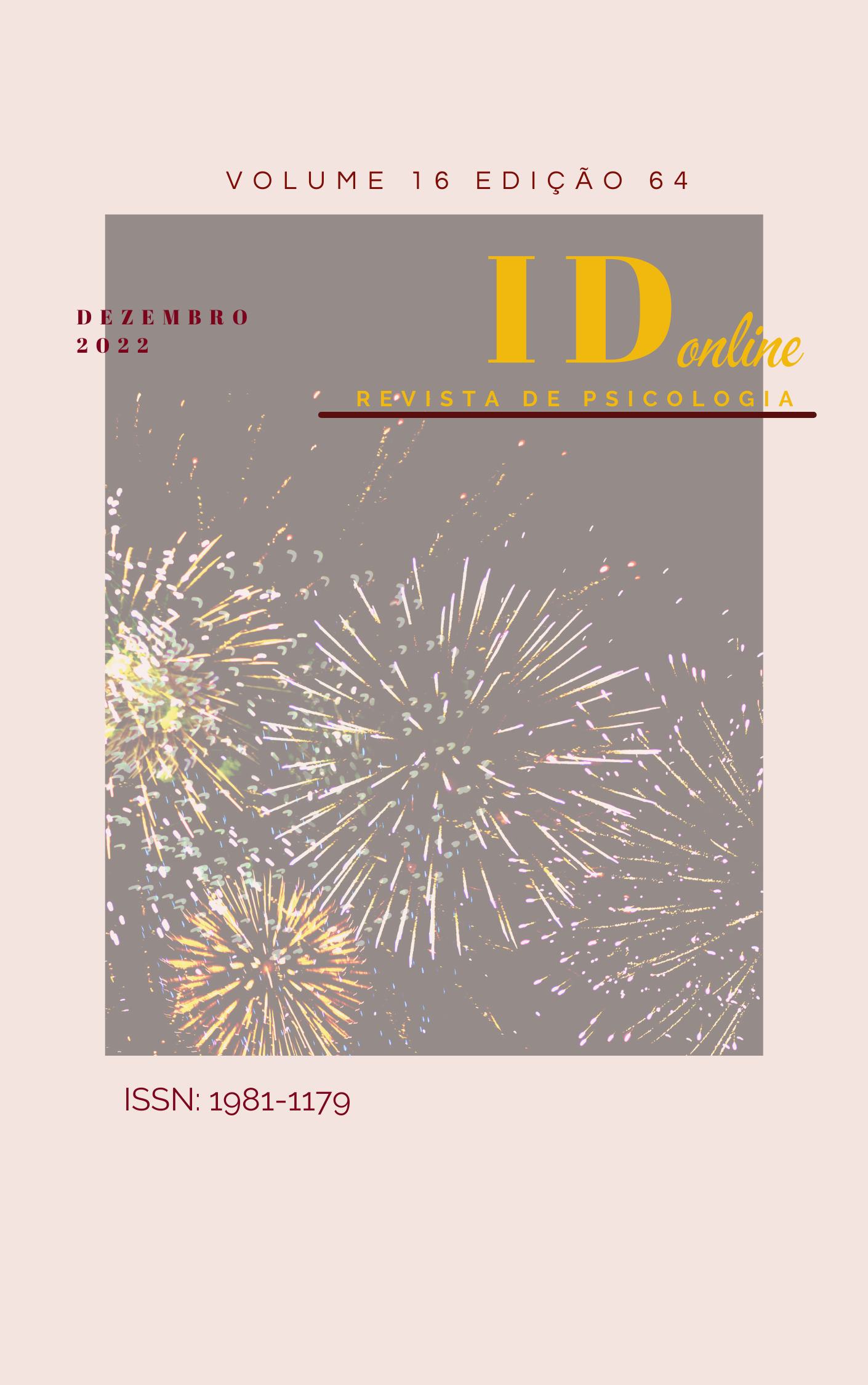Application of the Active Methodology "Rotation by Stations" as Pedagogical Tool in English Language Classes
DOI:
https://doi.org/10.14295/idonline.v17i69.3900Keywords:
Active methodology, Station Rotation, English Language TeachingAbstract
The general objective of this research is to discuss how the application of the active methodology “Rotation by Station” can be used as a pedagogical tool in English language classes. The hybrid teaching model is similar to what we know as traditional teaching, given that it is a combination of current methods and current pedagogical practices. Therefore, there is no need to change all the conventions of the instruction model that everyone knows. One of the advantages of this tool is that teachers are more present, ensuring support for students who need more attention, as not everyone develops or learns in the same way. The tasks performed by each station are somewhat independent, but are carried out in an integrated manner. The objective of this proposal is to promote proficiency in the English language and present the concepts, possibilities and limitations of applying the station rotation method as a teaching tool in the English classroom during the teaching process. With theoretical-methodological aspects of bibliographic research, we used qualitative research, covering some theorists, including: Berbel (2015), Freire (2017), Moran (2016), Moreira (2015), Mininel (2022) and other researchers, educators and professionals who work and defend the improvement of English language teaching through active station rotation methodologies. Active approaches improve learning through communication, interaction and understanding of reality. Therefore, the combination of digital technologies and proactive approaches can lead to a differentiated experience, making it possible to work with complex content collaboratively. The study found that, in addition to the difficulties encountered during the experience, innovative actions are necessary to make students protagonists in the construction of knowledge and stimulate vitality. Interaction and collaboration in learning spaces facilitate the individual's comprehensive training.
Downloads
References
ABREU, J.R.P. Contexto Atual do Ensino Médico: Metodologias Tradicionais e Ativas - Necessidades Pedagógicas dos Professores e da Estrutura das Escolas. 2009, 172. Dissertação (Mestrado em Ciências da Saúde) – Faculdade de Medicina, Universidade Federal do Rio Grande do Sul, Porto Alegre, 2009.
BARBOSA, Eduardo Fernandes; MOURA, Dácio Guimarães de. Metodologias ativas de aprendizagem na educação profissional e tecnológica. Boletim Técnico do Senac, Rio de Janeiro / RJ, v. 39, n. 2, p. 48-67, maio. 2013. DOI: https://doi.org/10.26849/bts.v39i2.349
BASTOS, C.C. Metodologias Ativas. Educação e Medicina. 2006. Disponível em: <http://educacaoemedicina.blogspot.com.br/2006/02/metodologiasativas.html>. Acesso em: 15 Outubro. 2023.
BACICH, L.; MORAN, J. Aprender e ensinar com foco na educação híbrida. Revista Pátio, n. 25, p. 45-47, 2015.
BACICH, L.; NETO, A. T.; TREVISANI, F. M. Ensino Híbrido: personalização e tecnologia na educação. 1. ed. Porto Alegre: Penso, 2015.
BERBEL, Neusi Aparecida Navas. Metodologia da problematização: fundamentos e aplicações. Londrina: UEL; 1995.
BERBEL, N. A. N. As metodologias ativas e a promoção da autonomia dos estudantes. Ciências Sociais e Humanas, Londrina, v. 32, n. 1, p. 25-40, jan./jun. 2013. DOI: https://doi.org/10.5433/1679-0359.2011v32n1p25
BRASIL. Base Nacional Comum Curricular (BNCC). Educação é a Base. Brasília: MEC/CONSED/UNDIME, 2017.
BRASIL. Ministério da Educação (MEC), Secretaria de Educação e Tecnológica (Semtec). Parâmetros Curriculares Nacionais para o Ensino Médio. Brasília: MEC/Semtec, 1999.
BRASIL. Secretaria de Educação Fundamental. Parâmetros curriculares nacionais: terceiro e quarto ciclos do ensino fundamental: língua estrangeira. Brasília: MEC/SEF, p. 1998.
CERVO, A.L.; BERVIN, P.A.; SILVA, R.L. Metodologia científica. 6. ed. São Paulo: Pearson Prentice Hall, 2007.
DAY, K. Ensino de língua estrangeira no Brasil: Entre a escolha obrigatória e a obrigatoriedade voluntária. Revista Escrita. Rio de Janeiro, n. 15, p.1-7, dez., 2012. DOI: https://doi.org/10.17771/PUCRio.escrita.20850
GODINHO, E. Z.; PARISOTO, M. F.; SORANSO, S. C. Análise da integração da metodologia de rotação por estações de aprendizagem para o ensino de conhecimento de luz e cores. Arquivos do Mudi, v. 24, n. 3, p. 63-70, 2020. DOI: https://doi.org/10.4025/arqmudi.v24i3.55268
MORÁN, José. Mudando a educação com metodologias ativas. In: SOUZA, Carlos Alberto de; MORALES, Ofelia Elisa Torres. Coleção Mídias Contemporâneas. Convergências Midiáticas, Educação e Cidadania: aproximações jovens. [S.l.]: UEPG, 2015. p. 15-33. v. II.
MORAN, J. Mudando a educação com metodologias ativas. Coleção Mídias Contemporâneas. Convergências Midiáticas, Educação e Cidadania: aproximações jovens. Vol. II. Carlos Alberto de Souza e Ofélia Elisa Torres Morales (orgs.). PG: Foca Foto-PROEX/UEPG, 2015. Disponível em: <http://www2.eca.usp.br/moran/up-content/uploads/2013/12/mudando_moran.pdf> Acesso em: 13 Outubro. 2023.
MORAN, J. (2015). Educação Híbrida. Um conceito-chave para a educação, hoje. In: Bacich, L.Neto, A. T. Trevisani, F. M. (org.). Ensino híbrido: personalização e tecnologia na educação.
MORAN, J.BACICH, L. (2018). Metodologias ativas para uma aprendizagem profunda. In: Metodologias ativas para uma educação inovadora: uma abordagem teórico prática. Editora Penso, Porto Alegre.
MORAN, J. Metodologias ativas e modelos híbridos na educação. In: YAEGASHI, S. at. al (Orgs). Novas Tecnologias Digitais: Reflexões sobre mediação, aprendizagem e desenvolvimento. Curitiba: CRV, 2017, p.23-35. Disponível em: <http://www2.eca.usp.br/moran/wpcontent/uploads/2018/03/Metodologias_Ativas.pdf>.Aces-so em: 15 Outubro. 2023.
MOREIRA, J.R.; RIBEIRO, J.B.P. Prática pedagógica baseada em metodologia ativa: aprendizagem sob a perspectiva do letramento informacional para o ensino na educação profissional. Periódico Científico Outras Palavras, volume 12, número 2, ano 2016. Disponível em: . Acesso em: 12 Outubro. 2023.
PISCHETOLA, M.; MIRA, L.V.T. Metodologias ativas: uma solução simples para um problema complexo? Revista educação e cultura contemporânea, v. 16, n. 43, p. 30-56, 2019. DOI: https://doi.org/10.5935/2238-1279.20190003
PRENSKY, Mark. O papel da tecnologia no ensino e na sala de aula. Conjectura, v. 15, n. 2, p. 201-204, maio/ago. 2010.
Downloads
Published
How to Cite
Issue
Section
License
Copyright (c) 2023 Maria das Dores Silva Nascimento, Cicera Rosimere Ferreira

This work is licensed under a Creative Commons Attribution-NonCommercial 4.0 International License.
Os autores detêm os direitos autorais sem restrições, devendo informar a publicação inicial nesta revista, em caso de nova publicação de algum trabalho.










